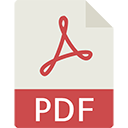- RUCL Repository
- →
- Faculty of Science
- →
- Department of Applied Mathematics
- →
- PhD Thesis
- →
- View Item
JavaScript is disabled for your browser. Some features of this site may not work without it.
Intrinsic Features of Nonlinear Waves in Dusty Plasmas
Salam, Md. Abdus
Date:
2024
Abstract:
Dusty plasmas are electrically conducting ionized gases (macroscopically quasi-neutral) that comprise positively and negatively charged dust particles in addition to ions and electrons. Dusty plasmas exist in the Earth's magnetosphere, cometary tails, planetary rings, asteroid rings, rotating stars, and many other astronomical environments. In dusty plasmas, various types of nonlinear waves, such as solitary waves, shock waves, etc., may be propagated. The presence of dust particles makes the plasma system more complex. Besides, the characteristics of nonlinear waves can be substantially affected by different forces and plasma parameters. We theoretically investigate the characteristics of dust-ion-acoustic solitary and shock waves, where the plasma species follow different particle distributions. The higher-order nonlinear and dispersive (or dissipative) effects on the waves are examined. We also investigate various kinds of effects, such as magnetic, adiabatic, parametric, etc., while it is illustrated that how they change the wave characteristics. An inhomogeneous KdV-type or modified KdV-type equation is obtained for demonstrating the solitary waves, whereas an inhomogeneous modified Burgers-type equation is obtained for the shock waves. The reductive perturbation method is extensively used for incorporating the higher-order effects into the KdV, modified KdV, and modified Burgers equations. The re-normalization technique, the Abel’s theorem, and the method of variation of parameters are used for adding higher-order nonlinear and dispersive (or dissipative) effects into the solutions.
We deal with the theoretical investigation of the combined effect of the magnetic field and plasma rotation on the nonlinear features of obliquely propagated dust-ion-acoustic solitary waves in a magnetized dusty plasma. From the investigation, it is found that the overall impact of the magnetic field, oblique rotation, electron temperature, and dust concentration has a crucial role in changing the amplitude, width, and phase speed of the dust-ion-acoustic solitary waves. The results are expected to be helpful in describing the rotating flows of magnetized plasma that are believed to exist in the rotating stars, the pulsar magnetosphere, and other rotating astronomical objects.
We also explore the dynamic behaviors of multi-solitons as well as multi-shocks that propagate in a magnetized dusty plasma. The simplified Hirota method and the Cole-Hopf transformation are applied to construct the multi-soliton or multi-shock solutions. We observe that the magnetic field has a decreasing effect on the multi-soliton amplitudes and widths, whereas the dust concentration has an increasing effect on the amplitudes and widths of both types of waves.
The obtained results might be helpful to describe the solitary and shock waves propagated in the Earth's mesosphere, Jupiter's magnetosphere, cometary tails, etc., in which dust particles are commonly seen.
Description:
This Thesis is Submitted to the Department of Applied Mathematics, University of Rajshahi, Rajshahi, Bangladesh for The Degree of Doctor of Philosophy (PhD)
Files in this item
This item appears in the following Collection(s)
-
PhD Thesis [6]
Search DSpace
Browse
-
All of DSpace
-
This Collection
